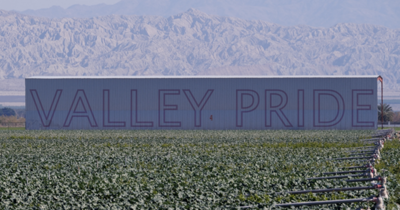Welcome at the Interface Culture program website.
Acting as creative artists and researchers, students learn how to advance the state of the art of current interface technologies and applications. Through interdisciplinary research and team work, they also develop new aspects of interface design including its cultural and social applications. The themes elaborated under the Master's programme in relation to interactive technologies include Interactive Environments, Interactive Art, Ubiquitous Computing, game design, VR and MR environments, Sound Art, Media Art, Web-Art, Software Art, HCI research and interaction design.

The Interface Culture program at the Linz University of Arts Department of Media was founded in 2004 by Christa Sommerer and Laurent Mignonneau. The program teaches students of human-machine interaction to develop innovative interfaces that harness new interface technologies at the confluence of art, research, application and design, and to investigate the cultural and social possibilities of implementing them.
The term "interface" is omnipresent nowadays. Basically, it describes an intersection or linkage between different computer systems that makes use of hardware components and software programs to enable the exchange and transmission of digital information via communications protocols.
However, an interface also describes the hook-up between human and machine, whereby the human qua user undertakes interaction as a means of operating and influencing the software and hardware components of a digital system. An interface thus enables human beings to communicate with digital technologies as well as to generate, receive and exchange data. Examples of interfaces in very widespread use are the mouse-keyboard interface and graphical user interfaces (i.e. desktop metaphors). In recent years, though, we have witnessed rapid developments in the direction of more intuitive and more seamless interface designs; the fields of research that have emerged include ubiquitous computing, intelligent environments, tangible user interfaces, auditory interfaces, VR-based and MR-based interaction, multi-modal interaction (camera-based interaction, voice-driven interaction, gesture-based interaction), robotic interfaces, natural interfaces and artistic and metaphoric interfaces.
Artists in the field of interactive art have been conducting research on human-machine interaction for a number of years now. By means of artistic, intuitive, conceptual, social and critical forms of interaction design, they have shown how digital processes can become essential elements of the artistic process.
Ars Electronica and in particular the Prix Ars Electronica's Interactive Art category launched in 1991 has had a powerful impact on this dialog and played an active role in promoting ongoing development in this field of research.
The Interface Cultures program is based upon this know-how. It is an artistic-scientific course of study to give budding media artists and media theoreticians solid training in creative and innovative interface design. Artistic design in these areas includes interactive art, netart, software art, robotic art, soundart, noiseart, games & storytelling and mobile art, as well as new hybrid fields like genetic art, bioart, spaceart and nanoart.
It is precisely this combination of technical know-how, interdisciplinary research and a creative artistic-scientific approach to a task that makes it possible to develop new, creative interfaces that engender progressive and innovative artistic-creative applications for media art, media design, media research and communication.
VIDEONALE.20
Eröffnung: 11. April, 19.00 Uhr; zu sehen bis 18. Mai 2025 Kunstmuseum Bonn und andere Orte in Bonn
Beteiligung von Lukas Marxt
Viedeonale feiert die 20. Ausgabe als großes Fest der Begegnung mit Videokunst und ihren Macher:innen: 26 internationale historische und aktuelle Werke der Videokunst sind in einer aufwendigen Ausstellungspräsentation im Kunstmuseum Bonn und an sechs Ausstellungsstationen in der Stadt Bonn zu sehen. Sie bilden den Parcours der VIDEONALE.20, der individuell mit dem Videonale-Stadtplan oder bei Führungen und geführten Spaziergängen gemeinsam erkundet werden kann. Zahlreiche Veranstaltungen an den Eröffnungstagen und während der gesamten Festival-Laufzeit laden euch darüber hinaus zur intensiven Auseinandersetzung mit den Werken ein.
Der Film Valley Pride von Lukas Marxt ist im Kunstmuseum Bonn zu sehen.
Valley Pride
Wenn wir durch die Arbeit von Lukas Marxt in eine kalifornische Wüste eintauchen – um genau zu sein, in das Imperial Valley, eine Region direkt an der Grenze zwischen den USA und Mexiko –, begegnen wir einer kontrastreichen Bilderwelt. Industrie vor Landschaft, Maschine neben Mensch, artifiziell vor natürlich gewachsen, Schnelligkeit im Zusammenspiel mit Ruhe. Die Kamera bewegt sich zu Beginn frei durchs Bild, schwebt nahezu. Dann bleibt sie stehen und filmt als beobachtende Instanz das Treiben: Menschen packen, laufen mit den Maschinen mit, bedienen sie, bücken sich und pflücken, verladen und räumen. Die Linse vermittelt zwischen uns und dem Geschauten, denn wir bleiben zunächst außen vor, verstehen erst schrittweise, was hier vor sich geht. Bald entdecken wir sie, Schriftzüge auf Blech und Karton: ›Valley Pride‹ und ›Ocean Mist‹. Zwei Drittel des Gemüseanbaus der USA finden in den hier angelegten Nutzräumen US-industrieller Landwirtschaft statt und werden unter solch zynisch-milden Namen vermarktet. So werden wir Zeug:innen einer horrenden Ausbeutung von Natur und Mensch gleichermaßen. Denn die Region rund um die hochsystematisierte Hyperlandwirtschaft ist nicht nur Opfer einer nicht mehr aufzuhaltenden Wasserverknappung und Pestizidvergiftung, welche wiederum zu einem immensen Tier- und Pflanzensterben geführt hat, auch ist sie in ihrer Systematik nur möglich, weil die hier arbeitenden Menschen, die mehrheitlich aus Mexiko stammen, unter höchst fragwürdigen und teils illegalen Bedingungen beschäftigt werden. Untermalt von dem vor Härte strotzenden Sounddesign von Jung An Tagen führt uns die Arbeit VALLEY PRIDE von Lukas Marxt vor Augen, wie ein seit Jahrzehnten etabliertes System in seiner Perfektion Natur und Mensch vergisst – und das mit Stolz. (Riccarda Hessling)
Produktion: s u n³b°u°r°s t FILM
Unterstützt von: Sonic Acts Biennial und Federal Ministry for Arts, Culture, the Civil Service and Sport
